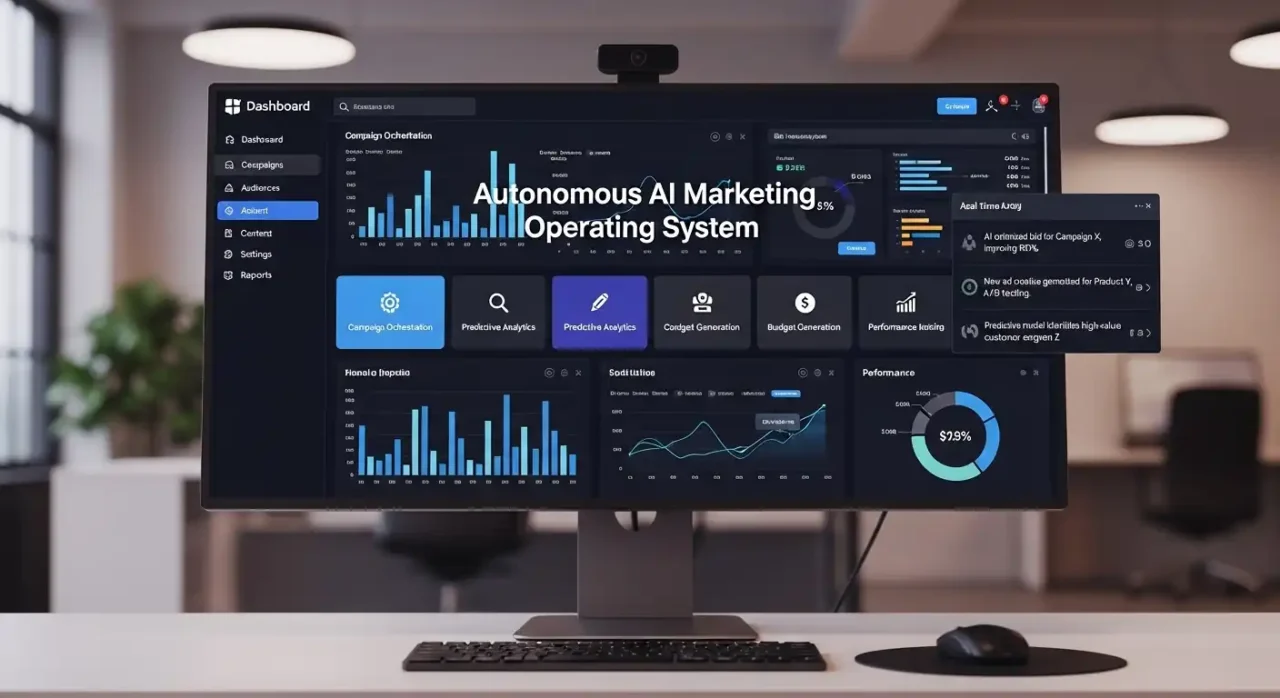What is Speculative Loading? Zapping Your Website’s Wait Times
Learn what speculative loading is zapping Your Website’s Wait Times
Ever wish your website could anticipate your users’ desires, loading pages before they even consciously decide to click?
It sounds like a futurist’s daydream, perhaps lifted from the pages of a William Gibson novel, but it’s rapidly becoming a reality thanks to a technique called Speculative Loading.
Forget incremental improvements; this is about creating a genuinely instantaneous browsing experience.
I. The Need for Speed: What Exactly is Speculative Loading?
It’s Like a Digital Crystal Ball: Imagine your website as a seasoned concierge, anticipating your every need before you even voice it.
That’s the essence of speculative loading. It’s a web performance technique that attempts to predict where users will navigate next on your site and proactively loads those pages or resources.
The objective?
To achieve near-instantaneous page transitions, create a fluid and responsive website that feels incredibly snappy and intuitive.
The “How-To” of Anticipation:
- Prefetching: Think of this as sending out a scout ahead of the main party. The browser proactively downloads key resources (such as HTML, CSS, and JavaScript) for a page that the user is likely to visit next. These resources are stored in the browser’s cache. When the user eventually clicks on the link, the browser can retrieve these pre-downloaded resources from its cache, resulting in a significantly faster load time. This is ideally suited for scenarios where you have “medium confidence” about the user’s next destination.
- Prerendering: This is akin to rolling out the red carpet and preparing the VIP suite in advance. The browser goes a step further than prefetching by not only downloading the resources but also rendering the entire next page in the background. When the user finally navigates to that page, it’s displayed instantly, creating a seamless and visually uninterrupted transition, almost like a carefully choreographed cut scene. However, prerendering is best reserved for “high confidence” predictions as it consumes more resources.
- Preconnecting: This involves preparing the network in advance, much like a digital handshake, to reduce the latency associated with future connections. By establishing connections to critical servers early on, you minimize the time it takes for subsequent requests to be processed, contributing to a faster overall browsing experience.
The Brains Behind the Operation:
Speculation Rules API – This isn’t a crude guessing game played by the browser.
Instead, developers use the Speculation Rules API, typically employing JSON rules, to explicitly instruct Chromium-based browsers (such as Chrome) on which pages to prefetch or prerender.
This level of control and precision is crucial for optimizing the technique and avoiding wasted resources.
Interestingly, WordPress 6.8 incorporated this functionality by default in April 2025, signaling its growing importance and mainstream adoption. This demonstrates a shift towards proactive performance optimization at the platform level.
II. Why Does This Matter? The Blink-and-You-Miss-It Benefits!

Goodbye, Loading Spinners! The most immediate and noticeable benefit is the eradication of those dreaded loading spinners.
Near-instant page transitions mean that users aren’t left staring at a blank screen, fostering a sense of responsiveness and immediacy.
Happy Users, Happy Google: More than just a superficial improvement, speculative loading directly enhances Core Web Vitals such as Largest Contentful Paint (LCP) and Interaction to Next Paint (INP).
These metrics serve as key signals that search engines, including Google, use to evaluate website quality and user experience.
Improvements in these areas translate to better SEO rankings and increased visibility.
Engagement Galore: A smooth and fast browsing experience keeps users engaged for longer periods, leading to more page views, higher conversion rates, and lower bounce rates.
It’s about removing friction from the browsing experience and allowing users to explore your content or products seamlessly.
Real-World Impact (Stats Alert!):
- 74% Browser Support: As of late 2025, approximately 74% of browsers (primarily those based on Chromium) support the Speculation Rules API. This means that a significant proportion of your audience can benefit from this technology. It’s a substantial market penetration that makes the investment in speculative loading worthwhile.
- 1.9% LCP Improvement: Websites that have implemented speculative loading have observed an average improvement of 1.9% in LCP passing rates. While this may seem like a small number, it can have a substantial impact on user perception and SEO performance, especially when combined with other optimization techniques.
III. Who Gets the Speed Boost? Industries Feeling the Impact
- E-commerce & Online Retailers: In the fast-paced world of online retail, every millisecond counts. Speculative loading provides instant access to product pages, category listings, and the checkout process. This directly impacts conversion rates by reducing cart abandonment and creating a more seamless shopping experience. Imagine a customer effortlessly browsing through a vast catalog, with each product page loading instantly – a powerful competitive advantage.
- Content & Media Platforms (News, Blogs): For news outlets and blogs, speculative loading ensures that readers can access the next article without delay, keeping them engaged with your content and improving time spent on site. In an era of fleeting attention spans, this can significantly increase engagement and advertising revenue.
- Web Development & Design Agencies: Developers are at the forefront, implementing and fine-tuning speculation rules to deliver superior site performance for their clients. This involves a deep understanding of website architecture, user behavior, and the nuances of the Speculation Rules API.
- Any Business with an Online Presence: Whether you’re a SaaS company or a B2B service provider, faster loading times translate to better first impressions, improved lead generation, and a stronger brand perception. In today’s digital landscape, a slow website can be a major deterrent.
IV. The Daily Grind: What People Are Trying to Get Done

For Web Developers: The primary challenge is engineering blazing-fast websites, reducing technical debt, and implementing cutting-edge performance optimizations without disrupting existing functionality. This requires a delicate balance between innovation and stability.
For Marketers: The overarching goal is to maximize user engagement, lower customer acquisition costs, improve conversion funnels, and ensure that their content reaches audiences instantly and effectively. Marketers are constantly seeking ways to capture and retain user attention in an increasingly competitive online environment.
For e-commerce managers, the focus is on streamlining the buying journey, reducing friction at every stage, and ultimately boosting sales and customer lifetime value. E-commerce managers are acutely aware of the impact of website performance on conversion rates and revenue.
For content creators, they strive to ensure that their stories, articles, and media are accessible immediately, guaranteeing that users can consume their content without frustration or delay. Content creators understand that a slow-loading website can diminish the impact of even the most compelling content.
V. The Buzz and the Backlash: Current Opinions on Speculative Loading
The Enthusiasts:
Within the web performance community, there’s a palpable excitement surrounding speculative loading. Many see it as a game-changer, capable of delivering truly “instant” web experiences and achieving stellar Core Web Vitals scores.
The flexibility offered by the Speculation Rules API is also lauded as a significant advantage.
The Cautious Crew: However, not everyone is wholeheartedly embracing the technology. Several concerns have been raised:
- Wasted Bandwidth: If the browser prefetches pages that users never visit, it can result in a drain on server resources and user data, particularly for mobile users with limited data plans. This is a valid concern that needs careful consideration.
- Analytics Headaches: Prerendering can prematurely trigger pageview events, leading to skewed data and potentially misinformed business decisions. This requires careful configuration and potentially adjustments to analytics tracking.
- “Unsafe” URLs: Pages that trigger actions (such as “add to cart” or “sign out”) if speculatively loaded could lead to unintended consequences. Therefore, meticulous exclusion of such URLs is critical.
- Privacy Ponderings: Preloading content before a user explicitly clicks on a link raises questions about sharing the user’s browsing context with destination servers. This is a legitimate concern that warrants careful consideration and transparency.
George Schildge’s Take (AI is the Answer):
While George Schildge hasn’t explicitly commented on speculative loading, his overarching philosophy at Matrix Marketing Group and MatrixLabX provides valuable insights.
He champions AI-native marketing innovation that replaces “manual, fragmented processes” with predictive, adaptive, and autonomous systems. For Schildge, merely “bolting on AI” to existing platforms is insufficient.
This implies that effectively addressing complex web performance optimizations like speculative loading requires advanced AI to predict user intent, manage resources efficiently, and ensure measurable business outcomes – transforming it from a potential “gamble” into a well-calculated “strategic advantage.”
This perspective suggests that the true potential of speculative loading can only be realized through AI-driven optimization.
VI. The Double-Edged Sword: Problems and Business Blunders
It all starts with the right foundation. Get it, and your cost of ownership skyrockets. Look for a unified AI system, such as PersistentIQ, with AIWebPad and AIContentPad.
- Server Strain & Cost Spikes: Unnecessary requests stemming from overly aggressive speculative loading can significantly increase server load, bandwidth consumption, and hosting costs – a genuine concern for high-traffic websites or those relying on shared hosting environments.
- Outdated Content Mishaps: Imagine a scenario where a news website prerenders an article, and then that article is updated before the user actually clicks on the link. The user would be presented with outdated information, which is not ideal.
- Analytics Anarchy: Skewed pageview data can lead to flawed marketing and business decisions, making it difficult to trust your performance metrics and hindering accurate analysis.
- Plugin Predicaments & Compatibility Conundrums: Some website plugins or dynamic content that depend on a “full page load” may become confused or malfunction when pages are loaded speculatively.
- Debugging Dilemmas: Monitoring and troubleshooting speculative loading can be a challenging task, requiring specialized tools such as Chrome DevTools.
- Mobile Mayhem: On mobile devices with limited data plans or slower connections, excessive speculative loading can quickly deplete data allowances and drain battery life, resulting in a worse user experience.
VII. The Race for Speed: Who’s Playing in the Web Performance & AI Marketing Sandbox?
The market is teeming with solutions designed to enhance web performance and leverage AI for marketing purposes. Here are some notable players:
- Cloudflare: A leading CDN provider that enhances website performance through caching, optimization, and security measures.
- NitroPack.io: A specialized web optimization service focused on page speed, caching, and image optimization.
- Jasper AI: An AI marketing platform primarily geared towards content creation and copywriting at scale.
- Albert AI: An advanced marketing AI platform that automates and optimizes paid advertising campaigns across multiple channels.
- Optimizely: A DXP and experimentation platform focused on conversion rate optimization, personalization, and content management.
Why Matrix Marketing Group Stands Apart:
Matrix Marketing Group distinguishes itself through its AI-native approach, performance-based pricing model, and the power of MatrixLabX.
- “Stop Paying for Marketing. Start Investing in Growth.”Unlike traditional agencies that rely on fixed retainers, Matrix Marketing Group offers performance-based pricing (CPL, CPA, Revenue-Share), directly aligning compensation with your measurable results. This ensures that your budget is focused on activities that demonstrably drive growth.
- AI-First, Not AI-Last: While many companies “bolt on” AI as an afterthought, Matrix Marketing Group and MatrixLabX are built on AI from the ground up. This includes proprietary NeuralEdge™ AI and agentic systems designed for LLM optimization and autonomous marketing.
- Proactive Problem Solving: For complex web performance challenges, such as the potential risks associated with speculative loading (wasted bandwidth, analytics inaccuracies), Matrix’s AI-driven insights provide the precision needed to implement strategies effectively, minimize waste, and accurately measure their impact.
VIII. Matrix Marketing Group & MatrixLabX: Your AI Toolkit for Smarter Web Performance

Matrix Marketing Group, powered by MatrixLabX, brings an AI-native perspective that can help you manage and leverage advanced techniques like speculative loading effectively:
- MatrixLabX’s PrescientIQ for Predictive Speculation Rule Optimization:
- Application: The success of speculative loading hinges on accurate predictions. PrescientIQ, MatrixLabX’s AI-powered growth suite, utilizes predictive analytics to intelligently identify the most valuable user journeys and pages that are most likely to be visited. This enables precision targeting of speculation rules, minimizing wasted bandwidth from incorrect predictions and focusing resources where they will deliver the greatest impact.
- MatrixLabX’s AIContentPad for Hyper-Optimized, Fresh Content:
- Application: One major drawback of speculative loading is the potential for serving outdated content. AIContentPad, an AI agent within MatrixLabX, can rapidly generate and automatically optimize fresh, lightweight, and highly relevant content. This ensures that any page that is speculatively loaded is always current, fast-loading, and engaging.
- Matrix Marketing Group’s Performance-Based AI Marketing for ROI Measurement:
- Application: While speculative loading aims to improve Core Web Vitals and engagement, attributing ROI can be difficult due to analytics complexities. Matrix Marketing Group’s unique performance-based pricing model, underpinned by its AI Marketing Flywheel, uses advanced attribution and real-time data analysis to clarify the true impact of web performance optimizations on KPIs such as LCP, INP, conversion rates, and revenue.
IX. Success Stories: AI-Driven Performance in Action
Case Study 1: E-commerce Retailer’s Revenue Surge
The Challenge: “FashionForward,” a mid-market e-commerce brand ($25M annual revenue), struggled with slow page load times on product category pages, leading to high bounce rates and cart abandonment.
The Matrix Marketing Group Solution: Leveraging Matrix Marketing Group’s performance-based AI marketing, “FashionForward” implemented an AI-driven speculative loading strategy, targeting product category pages and high-intent product detail pages.
The AI-Driven Results: Within three months, “FashionForward” saw a 22% increase in visitor-to-MQL conversion rate and a 15% lift in average order value. The transparent attribution from Matrix’s AI showed a 4.8x ROAS on their AI marketing program, directly tying their investment to a $120,000 monthly incremental revenue gain.
Case Study 2: Media Publisher’s Content Velocity Leap
The Challenge: “DailyDigest,” a popular online news publisher, consistently struggled to keep its content fresh and engaging.
The MatrixLabX Solution: DailyDigest integrated MatrixLabX’s AIContentPad and PrescientIQ. AIContentPad dramatically increased its content creation velocity, while PrescientIQ intelligently managed speculative loading for these new articles.
The AI-Driven Results: DailyDigest achieved a 50% reduction in content production time, resulting in a doubling of content output. More importantly, their “Time to First Byte (TTFB)” for critical news pages improved by 35%, and user engagement (time on page) increased by 10%, contributing to a 40% increase in marketing-sourced revenue.
X. The Future is Fast: What’s Next for Speculative Loading
- Smarter Than Ever: Expect more advanced AI and Machine Learning algorithms to power prediction engines, making speculative loading even more accurate and less wasteful.
- Universal Love: While strong in Chrome, look for broader support across other browsers, such as Firefox and Safari, to make the web faster for everyone.
- Dynamic and Adaptive: Future systems will likely adjust preloading aggressiveness on the fly, based on network conditions, device capabilities, and real-time user behavior.
- Deeper Integration: Tighter ties with caching strategies and edge computing will further amplify performance gains, delivering content from the closest, fastest possible source.
- New Web Standards: Expect more sophisticated APIs and web standards to evolve, offering even finer-grained control and mitigating current drawbacks.
XI. The Takeaway: Navigating the Fast Lane with AI
Speculative loading represents more than just a technological trick; it signifies a fundamental shift toward creating an instantaneous web experience. However, like any potent instrument, it comes with inherent complexities.
Here are the key takeaways:
Speed is Non-Negotiable: Speculative loading offers game-changing speed improvements, enhancing user experience, SEO, and engagement by making page loads feel nearly instant.
It’s a Balancing Act: While the potential benefits are substantial, so are the potential risks – wasted resources, analytics confusion, and compatibility issues can transform a potential win into a significant headache.
AI is Your Co-Pilot: Effectively implementing and managing speculative loading, particularly given its inherent predictive and resource management challenges, demands the power of advanced AI.
Data-Driven Decisions Rule: Without access to accurate data and robust attribution models from AICDPPad, it is impossible to measure the ROI of your performance optimizations.
Matrix Marketing Group is the Performance Partner: For businesses that aim to leverage cutting-edge web performance techniques, such as speculative loading, an AI-native agency with a performance-based pricing model, like Matrix Marketing Group, can provide the strategic intelligence and measurable results needed to excel in the speed race.
They can help transform the potential “gamble” into a guaranteed growth engine.
AI Playbook Selector by Industry
Find Your AI Marketing Playbook
Pick your industry → go straight to your tailored AI Playbook.


